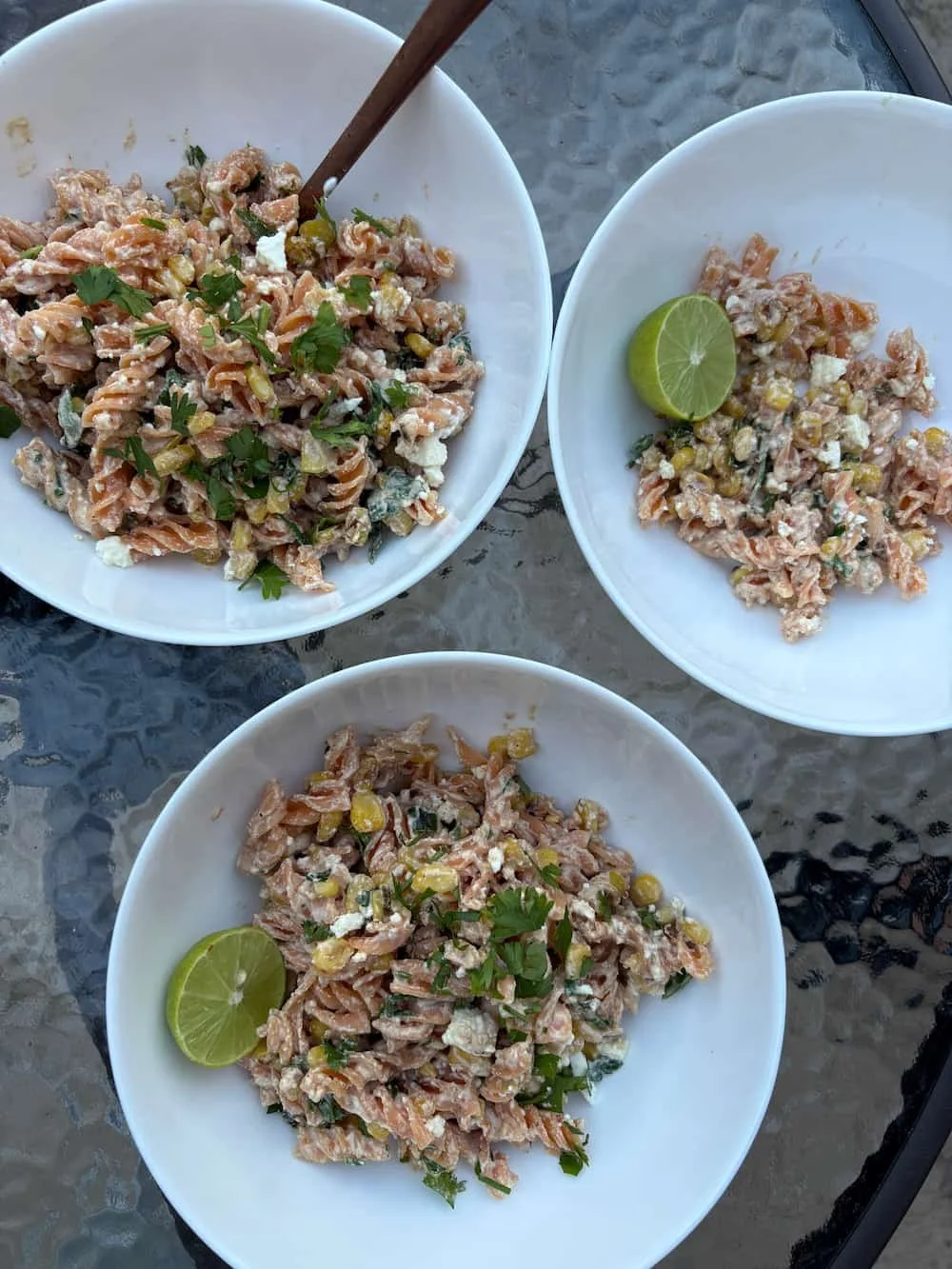nutrition tips & tricks
A great online nutrition coach does more than hand you a plan — they listen, collaborate, and tailor strategies to your life. The right coach helps you master the basics, build sustainable habits, and leave with the tools and confidence to succeed long after coaching ends.
Set point theory suggests your body has a “preferred” weight it tries to maintain, but that doesn’t mean you can’t influence it. With supportive habits, a positive environment, and the right mindset, you can shift your body’s balance and create sustainable change that lasts.
Stim eating happens when you snack for stimulation, not hunger. For ADHD brains, it’s a common way to chase dopamine. Learn why it happens and how to build better tools.
Food noise is the nonstop chatter about food - what, when, and why you eat. Here’s why ADHD makes it louder, and strategies to build more peace with eating.
Aldi is packed with hidden high-protein gems. From ready-to-eat meals to protein-packed snacks and wraps, here’s your cheat sheet for easy, affordable, and macro-friendly shopping.
Think your metabolism is “slow”? Coach Kenny explains what metabolism really is, how your body burns calories, and which habits make the biggest impact. Learn the four parts of calorie burn—BMR, NEAT, TEF, and exercise—and discover practical, science-backed ways to support a healthier, more efficient metabolism without gimmicks.
Nutrition labels don’t have to feel confusing or stressful. Coach Zach breaks down how to read calories, macros, fiber, and serving sizes without overthinking, so you can make confident choices that support energy, fat loss, and food peace—whether you’re at home, traveling, or training.
This creamy, tangy, high-protein street corn pasta salad puts a macro-friendly twist on Mexican esquites. Packed with fiber and protein, it’s quick to make, perfect for meal prep, and family-approved (even toddler-approved!). Try this easy, flavourful recipe with flexible spices and toppings for a balanced dish that keeps you full and energised.
Macro tracking doesn’t have to feel like a second job. These 8 ChatGPT prompts help you plan meals, prep smarter, and stay consistent with your AI nutrition coach and sidekick.
Want to get lean and stay lean? Coach Zach shares the real trade-offs of fat loss—from calorie tracking to social sacrifices—and why extreme leanness isn’t always sustainable. Learn what realistic fat loss looks like, and how to choose a balanced approach that boosts confidence, energy, and health for the long term.
GLP-1s reduce food noise and support weight loss, but lifestyle still matters. Learn how to protect your health, build habits, and navigate the mental side while using them.
If you're a teacher running on caffeine, granola bars, and sheer willpower, you’re not alone. Between lesson planning, grading, classroom chaos, and trying to sneak in a bathroom break, your own nutrition is falls low on your list. But here’s the thing: your energy, focus, and even your mood are directly impacted by what (and when) you eat. And, as busy as you are, you do still have to eat!
Training for Hyrox is intense. This guide shows you how to fuel properly with calories and macros so you can recover, adapt, and perform your best.
GLP-1 medications like Ozempic, Wegovy, and Mounjaro can improve blood sugar, reduce cardiovascular risk, and help with weight loss—but they’re not without side effects. From nausea and under-fueling to cultural stigma and equity concerns, the truth about GLP-1s is complicated. Here’s what you need to know about their benefits, risks, and why nuance matters.
It’s another Friday night, you head out with the girls, down a few Margaritas and tacos before returning home frustrated from your continued “lack of willpower” in maintaining a “healthy” lifestyle. Before you know it, you’ve grabbed the family-size bag of Doritos from the cabinet and polished off every last crumb while watching repeat episodes of Gilmore Girls…despite not actually feeling that hungry.
At Kate Lyman Nutrition, we strongly believe in the power of macro tracking because of the education around food composition and insight into one’s nutritional choices and behaviors it can provide. That insight, even if only examined closely through numerical data for a brief period of time, can be a tool that continues to serve someone for their whole lives. In fact, we also strongly believe in moving away from macro tracking regularly once someone feels solid in the foundational habits they initially used tracking to develop and hone!
Let’s be real: managing nutrition is hard enough for most people, but if you’re living with ADHD, it can feel like climbing a mountain with no trail map, two granola bars, and a backpack full of bricks. I know this well, because I also have diagnosed ADHD. Between executive dysfunction, sensory overload, emotional regulation struggles, and medication side effects, eating “normally” with ADHD can feel anything but normal. And yet, so many of my clients with ADHD feel shame for not having it all together when it comes to food. So let’s throw that shame in the trash where it belongs and talk about what’s actually going on (and what we can do about it).
Let’s be honest: a crisp glass of Sauvignon Blanc after a long day can feel like a ritual. A margarita at girls’ night? Practically a sacred tradition. But if you’ve hit your 40s or 50s and started noticing that your go-to drink doesn’t go down (or stay down) quite like it used to, you’re not imagining things. As we transition into menopause, shifts in hormones, sleep, and temperature regulation are common -- including how our bodies handle alcohol. So, what gives? Why does that second glass of wine suddenly feel like a train crashing right into our bodies when ten years ago we were able to down two glasses before heading out to the bar for the bigtime fun stuff? Let’s break it down.
Collagen protein is often recommended as a beneficial supplement for joint and skin health, but does supplementing with collagen protein actually work? Or is collagen a waste of money? Let's investigate.
Trying to maintain your nutrition goals while eating in a cafeteria can feel challenging, but with a good approach, these dining spaces can actually be helpful in providing food choices that are aligned with your goals! Whether you're rushing between hospital rounds, balancing college classes, or managing a classroom of students, cafeterias offer consistent meal options that—when navigated strategically—can support rather than hinder your health, fat loss, and body composition goals.
When you hear the term “self-care”, what immediately comes to mind? Probably something physical (skincare, stretching,etc.) that is done in an effort to improve overall well-being. What we don’t include in that definition are some of the less glamorous things like movement and eating balanced meals that do have demonstrated benefits for mental health.
Focusing on making healthful nutrition changes does not have to equal making food taste boring: let’s put the idea of needing to eat boiled chicken breast and mushy vegetables in order to successfully pursue health goals to bed once and for all! On the contrary, by ensuring that we’re actually enjoying the health-promoting foods that we’re aiming to make staples in our diets, we’re far more likely to make change sustainable and, in turn, results retainable. Whether you’re looking to liven up your protein prep, make veggies more attractive to reach for or play around with new flavor profiles, here is a list of some of our favorite ways to insert flavor from Trader Joe’s.
Reverse dieting is the practice of increasing a person’s total daily caloric intake after a period of prolonged caloric restriction (aka a diet). Reverse dieting is all the rage on the internet, with social media promoting specific “Reverse Diet Coaches” and overly complicated reverse diet protocols to follow after time in a calorie deficit.
Breastfeeding is one of the most energy-demanding stages of life, let alone motherhood! If you've found yourself constantly hungry while nursing your little one, you're not alone – this increased appetite is both normal and necessary. Let's explore how to satisfy those intense hunger cues while ensuring you're getting the nutrients both you and your baby need.
Choosing the right “macro-friendly” protein bar can feel like spotting a snowflake in a blizzard—especially when marketing doesn't make it clear whether the product is actually a protein bar or more of a glorified candy bar. Protein bars can absolutely have a place in your daily intake, but it’s important to know what you’re really buying.
One part of our nutrition goals we often overlook is the inevitable fact that, at some point, our motivation will tank. When that happens, we often believe we have to rely on only willpower or wait until motivation comes back to feel “on track,” but the reality is that motivation will wane at times and, rather than waiting for it to reappear, this is a time when we can benefit from taking simple actions that help us rebuild momentum.
The holiday season often conjures images of festive gatherings, joyous celebrations, and, inevitably, alcohol. For many, these moments include a glass of wine, a cocktail, or a beer to toast the occasion. However, an increasing number of people are becoming "sober curious," re-evaluating their relationship with alcohol. This movement isn't about outright abstinence but about mindfulness and understanding how alcohol impacts our bodies, especially concerning health and fitness goals. Let's explore how alcohol affects our health, particularly in the realms of fat loss, sleep, and overall wellness.
With grocery prices rising, getting high-quality food (especially protein!) can be challenging. In this blog post, I’m breaking down some great budget-friendly grocery options by macronutrients that is perfect for those tracking macros and looking to eat well without breaking the bank.
If you’re in a calorie deficit and working towards fat loss goals, a main goal should be minimizing any feelings of restriction or hunger so you can maximize adherence to your deficit. This is why we, as coaches, take a strong stance against aggressive and unsustainable deficits. If our hunger is through the roof each day, it’s not very likely that we’ll be able to adhere to that calorie deficit for long. Luckily, there are tools that can help us minimize hunger and, luckily, those same tools also keep us well-fueled and promote our overall health as well.

























Food noise is that constant chatter in your head about food — this post shares clear, real strategies to quiet it without restriction or rigidity.